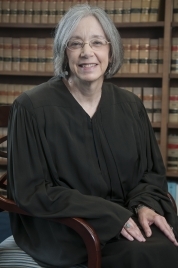 Federal appellate court practice can be a daunting experience, especially if you practice in multiple circuits. While the circuits share many common rules and practices, many of the circuits also have unique features that are important to be aware of.
Federal appellate court practice can be a daunting experience, especially if you practice in multiple circuits. While the circuits share many common rules and practices, many of the circuits also have unique features that are important to be aware of.
Federal Rule of Appellate Procedure 28(a)(4) states that one of the things that must be included in an appellant’s brief is:
“…a jurisdictional statement, including:
(A) the basis for the district court’s or agency’s subject-matter jurisdiction, with citations to applicable statutory provisions and stating relevant facts establishing jurisdiction;
(B) the basis for the court of appeals’ jurisdiction, with citations to applicable statutory provisions and stating relevant facts establishing jurisdiction;
(C) the filing dates establishing the timeliness of the appeal or petition for review; and
(D) an assertion that the appeal is from a final order or judgment that disposes of all parties’ claims, or information establishing the court of appeals’ jurisdiction on some other basis….”
Rule 28(b) states that an appellee does not need to include a jurisdictional statement in their brief unless they are dissatisfied with the appellant’s jurisdictional statement. This is where it is important to know your circuit’s rules, because the Seventh Circuit in particular does require an appellee to address the jurisdictional statement. Circuit Rule 28(b) states that “The appellee’s brief shall state explicitly whether or not the jurisdictional summary in the appellant’s brief is complete and correct. If it is not, the appellee shall provide a complete jurisdictional summary.” (Emphasis added).
The emphasis on the word “and” has recently become very important to Seventh Circuit practitioners, as Chief Judge Diane Wood of the Seventh Circuit recently issued an opinion ordering briefs from the Department of Justice and Air Line Pilots, an appellee in a separate case, stricken and requesting new briefs from the parties that addressed both the completeness and accuracy of the appellants’ statements. Judge Wood said:
“The job of the appellee is to review the appellant’s jurisdictional statement to see if it is both complete and correct. These terms are not synonyms. A statement might be complete in the sense of covering all required topics, yet contain inaccuracies. Alternatively, everything furnished might be correct, but the statement might be missing something critical….If the appellant’s statement is not complete, or not correct, the appellee must file a ‘complete jurisdictional summary.’ It is not enough simply to correct the misstatement or omission and ‘accept’ the balance of the appellant’s statement.”
Navigating the ins and outs of the circuit courts can be complicated and often frustrating. Call Cockle today to schedule a review of your brief for compliance with the local rules!